
Being Creative: Mark's Business Card

The January 2001 issue of Wired had an article about IDEO's "Identity Card" project. IDEO is an industrial design company. The project was a set of designs for business cards featuring cute ideas like one that contains perforated pieces so it can be customised to suit the encounter. I enjoyed the article but didn't really think much more of it. Some time in January I read a review of "The Art of Innovation" by IDEO's CEO. I followed a link to IDEO and then to the card project. I was struck again by its coolness and even forwarded the link to a few friends. A week or two later, the thought "I should design a card" popped into my head. This was doubtless because of my resolve to "be creative" but I think it was also enabled by my on-going work with PostScript for my Random Dot Clock (coming soon). The design came pretty much simultaneously with the idea: I'd use my designature and make it physically rotatable.
So, I wrote some PostScript code to produce this design:
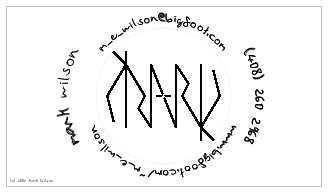
The central disk rotates, and the text (name/website/email/phone) curves around it. I tried to emphasise particular parts of each fields in a kind of iconic way -- I emboldened the "www" and the "@" etc (although that didn't come out particularly well, probably due to the card's small size).
I extended to PostScript to produce the various parts of the card, and I printed this on fairly heavy paper:

I then carefully cut these pieces out. The trick with the disks is to poke a pin through the centre into a cutting board, then press the tip of a craft knife through the paper at the desired radius and into the cutting board. It is then possible to rotate the paper around the pin, keeping the blade fixed, and produce an accurate circular cut.
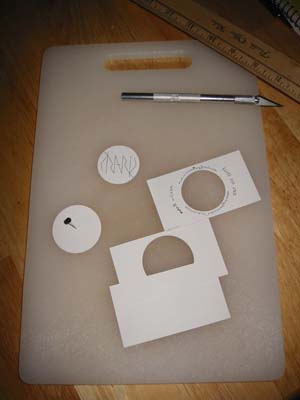
This is how the card was assembled, a sandwich of three layers:
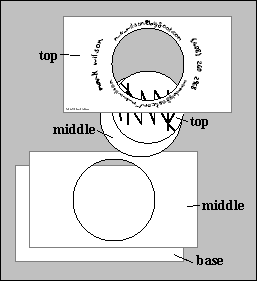
The base and middle layer were joined with double sided tape then the two disks were joined (about a common centre!), also with double sided tape. The disk assembly was then dropped into the hole in the lower part, then the top was fitted over the whole thing. The double sided tape was nice and simple, and also provided clearence between the layers. (Note that the radius of the middle disk is slightly larger than the upper disk).
This is the final result:
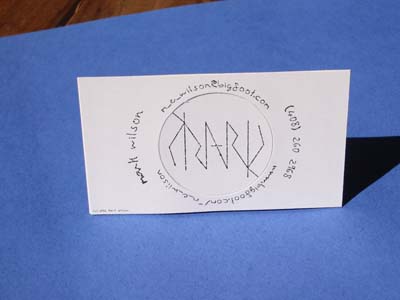
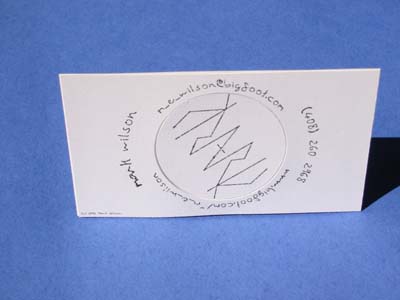
Note that there was some warping of the card's layers and I also noticed that the laser printed material seemed to wear off the particular (thicker than normal) paper I used. But the important thing is that is does work -- the "Mark" designature rotates within the card!